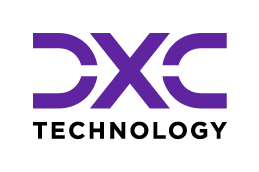DXC launches people-first workers’ compensation solution
IN Partnership with
Self-insured organisations gain AI-powered platform designed to support employee wellbeing and better return-to-work pathways

More


IF A warehouse worker slips on a loading dock, a nurse injures her back lifting a patient, or a call centre employee develops debilitating anxiety, the aftermath can define more than just their recovery. Without timely updates or visible support, injured employees can feel abandoned and left to navigate pain, paperwork and uncertainty largely alone.
For organisations that self-insure their workers’ compensation, these moments of injury test the organisations’ values. Rising healthcare costs, surging mental health claims and intricate regulations are straining internal teams and creating disjointed, inconsistent employee experiences.
But DXC Technology’s newly launched Assure Risk Management solution is designed to change all that. By combining experienced claims professionals with artificial intelligence, it helps companies streamline processes, stay compliant and – most importantly – show up for their people when it matters most.
“Many self-insured organisations are yet to embrace the possibilities of AI to enhance their performance and engagement,” says Micheal Neary, managing director of insurance at DXC Technology, Australia and New Zealand. “Staff turnover in claims roles, legacy systems, and scattered processes can lead to fragmented employee experiences.”

DXC Technology (NYSE: DXC) is a leading global provider of information technology services. We’re a trusted operating partner to many of the world’s most innovative organisations, building solutions that move industries and companies forward. Our engineering, consulting and technology experts help clients simplify, optimise and modernise their systems and processes, manage their most critical workloads, integrate AI-powered intelligence into their operations, and put security and trust at the forefront. Learn more on dxc.com.
Find out more



“At its core, DXC Assure Risk Management is about supporting people at a critical time – when they’ve been injured, are recovering and need to return to work safely”
Micheal Neary, DXC Technology
This fragmentation creates risk for both outcomes and workplace culture. When employees don’t receive consistent support during their recovery, trust erodes. Delays in processing claims, or a lack of communication about progress, can extend recovery times and increase costs.
More importantly, when employees are injured, how their claims are handled can significantly impact both their recovery and their relationship with the company. A good experience during this vulnerable time creates trust, improves return-to-work outcomes and ultimately affects retention.
DXC Assure Risk Management platform represents a shift towards treating workers’ compensation as an integral part of the employee experience, rather than merely a matter of operational compliance. The solution combines AI with human expertise to manage the end-to-end claims process for self-insured organisations – companies that use their own funds to cover employee insurance claims rather than purchasing traditional insurance policies.
DXC Assure Risk Management was developed through collaboration between claims experts in Australia and global technology teams, as well as insights from supporting self-insured organisations for over 40 years. The solution focuses on addressing the most common pain points employees experience during the claims process: delays, lack of updates and uncertainty about their recovery journey.
“At its core, DXC Assure Risk Management is about supporting people at a critical time – when they’ve been injured, are recovering and need to return to work safely,” explains Neary. “From decades of global experience, we know that how this process is handled makes a big difference to both recovery and retention.”
The solution brings structure, automation and dedicated expertise to ensure every employee receives the same level of care. Features include integrated dashboards, smart automation and consistent support designed to improve the employee journey from the moment an incident occurs through to full recovery.
The platform’s artificial intelligence component handles invoice processing, payment matching and issue identification, tasks that traditionally consume significant administrative time. This automation speeds up the process and reduces the risk of errors that can frustrate employees and delay outcomes.
“The AI component handles the heavy lifting by extracting data from documents, matching payments and identifying issues,” adds Neary. “This speeds up the process and reduces the risk of errors. But what really matters is the human oversight.”
Claims professionals make informed decisions, provide timely updates and offer support to employees throughout their recovery. This combination of automation and professional care helps reduce claim duration, improves transparency and ensures employees feel supported throughout the process.
The platform supports a highly automated, AI-enabled process that removes manual effort, improves consistency and reduces costs while maintaining the human touch that employees need during recovery.
“The AI component handles the heavy lifting … [t]his speeds up the process and reduces the risk of errors. But what really matters is the human oversight”
For chief people officers, the solution provides real-time visibility into the claims and recovery progress, enabling more strategic decision-making around employee care. Rather than focusing on administrative tasks, HR leaders can use data insights to drive better decisions around employee wellbeing, absence management and workplace safety.
“HR leaders will have greater oversight and actionable insight,” says Neary. “Instead of focusing on the administrative side of claims, they will be able to use real-time data to drive better decisions around employee care, absence management and workplace safety.”
This enhanced visibility helps build trust and confidence within the organisation. When HR teams have access to comprehensive data about claims trends and outcomes, they can advocate more effectively for employee needs and demonstrate the value of wellbeing investments to leadership.
Successfully implementing technology-enabled risk management requires more than just new systems; it demands a cultural shift in how organisations view workers’ compensation. Companies need to move beyond seeing claims as merely a compliance exercise and recognise them as part of their broader employee experience strategy.
“The biggest shift is treating claims as part of the employee experience rather than just a compliance or operational process,” explains Neary. “When businesses view return-to-work as part of their broader culture and wellbeing strategy, outcomes tend to improve for everyone involved.”
This cultural transformation requires leadership commitment and clear communication about the organisation’s values around employee care. It means investing in systems and services that consistently, transparently and compassionately support injured employees.

Share






A people-first approach to claims
The AI advantage with human oversight
Published 11 Aug 2025
Share









AU
NZ
ASIA
CA
US
News
SPECIALISATION
Events
Best in HR
Resources
Subscribe
ADVERTISE
Companies
People
Newsletter
Copyright © 2025 KM Business Information Australia Pty Ltd.
About us
Authors
Privacy Policy
Conditions of use
Contact us
RSS





ALL ABOUT DXC
News
Specialisation
EVents
Best in HR
Resources
Subscribe

AU
NZ
ASIA
CA
US

Companies
People
Newsletter
Copyright © 2025 KM Business Information Australia Pty Ltd.
About us
Authors
Privacy Policy
Conditions of use
Contact us
RSS





News
Specialisation
EVents
Best in HR
Resources
Subscribe

AU
NZ
ASIA
CA
US

Companies
People
Newsletter
About us
Authors
Privacy Policy
Conditions of use
Contact us
RSS

Copyright © 2025 KM Business Information Australia Pty Ltd.




21 of the world’s top 25 insurers rely on DXC to help them solve critical business challenges and support their mission-critical operations.
DXC has over 40 years of experience servicing corporations, government entities, risk pools and third-party administrators (TPAs) in the self-insured market.
DXC has guided over 1,000 insurance clients through disruption, processing over 1 billion insurance policies and 10% of the world’s premiums.
The company operates in over 70 countries with 120,000+ employees.
Empowering HR with actionable insights

The cultural shift required
Micheal Neary, DXC Technology

The broader implications of effective workers’ compensation management extend beyond individual claims. When employees see their colleagues receive proper support during recovery, it builds confidence in the organisation’s commitment to their wellbeing. This trust contributes to higher engagement, improved retention and a stronger overall workplace culture.
“Investing in systems and services that consistently, transparently and compassionately support injured employees helps build a stronger internal culture and improves long-term workforce resilience,” says Neary.
Building workforce resilience
The solution enables injured employees to return safely to work and their everyday lives while ensuring compliance with state-specific regulations. For self-insured organisations, this balance between care and compliance is essential for managing both financial and reputational risk.
As AI and advanced risk management tools become more integrated into HR processes, the role of chief people officers will continue to evolve. Technology will free up HR teams to focus on strategic wellbeing initiatives and will also provide better tools for tracking trends and measuring outcomes.
“Tools like DXC Assure Risk Management free up HR teams to focus on wellbeing strategies while improving their ability to track trends and advocate for employee needs with confidence and evidence,” adds Neary.
This evolution represents an opportunity for HR leaders to demonstrate their strategic value by using data-driven insights to improve employee experiences and business outcomes simultaneously.
SaaS technology: End-to-end, persona-based claims and risk management system featuring document automation, dashboards and gen AI throughout the claims process to help improve outcomes
AI-enabled business processes: Automation of claims workflows, mitigation of operational risks, and health and safety tools
Human-in-the-loop components: Specialised team of experts with unparalleled insurance knowledge that can support all aspects of the claims life cycle, including sentiment analysis and claims prevention
Key features of DXC Assure Risk Management

For self-insured organisations, the stakes of getting workers’ compensation right have never been higher. Rising costs, increased regulatory scrutiny and growing employee expectations around support during recovery create pressures that traditional approaches struggle to address.
“It is a new approach to managing risk, recovery and care,” says Neary.
By simplifying claims handling and delivering a better experience, DXC Assure Risk Management helps businesses uphold their culture while meeting their obligations. For chief people officers, this represents an opportunity to demonstrate how strategic technology investments can improve both employee wellbeing and business outcomes.
“The better supported an employee feels throughout the claims process, the more likely they are to return to work and remain engaged with their organisation.”
Making the difference in employee care

